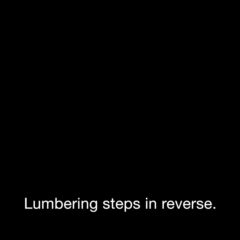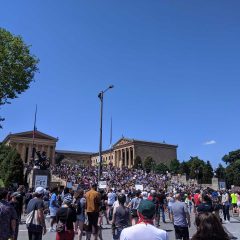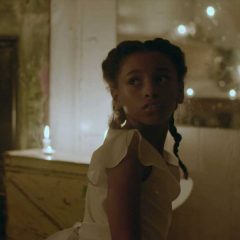Post by Susan Feagin
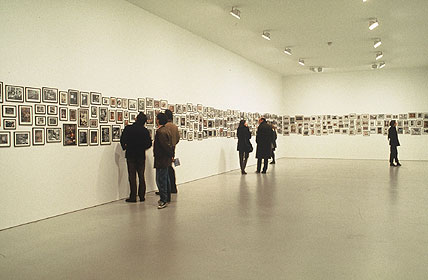
Installation shot of Douglas Blau a typical installation picture. All photos in post taken from ICA website. Note from Roberta and Libby: Blau, who appropriates images, is shy about having his own art photographed. While we attempted to take photos at the opening, we were stopped by him.
The University of Pennsylvania’s Institute of Contemporary Art is showing the first exhibition of new work by Douglas Blau in almost ten years. It features several pieces by Blau from 2008 and one work, “The Conversation Piece,” from 1993-1995.
Each piece from 2008 consists of a 3 x 3 or 3 x 4 grid of identically-framed images, and each frame contains, with few exceptions, two or more images of various types, such as post cards, film stills, and reproductions of paintings. The gallery notes encourage viewers to see each work as supporting narrative readings. Narratives describe sequences of actions and events that relate to one another, through time, in meaningful ways. But there is no particular direction for the eye to follow when looking at grids such as these. They may be read left to right like a series of lines on a page, top to bottom in columns, from the center outward like spokes of a wheel, and so on. To further complicate things, we are also told that the placement of images within each piece is not fixed and may be rearranged for each exhibition. Hence, these images are not read like traditional narratives, but at most like experimental novels whose chapters or pages have no fixed sequence and are to be shuffled and read differently at different times.
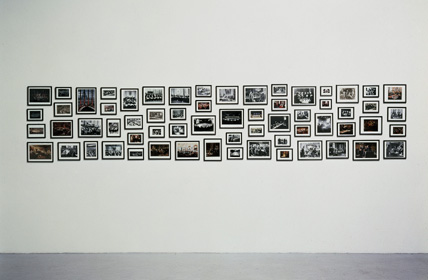
The multiple images within each frame overlap or are collaged with one another. Juxtapositions are sometimes witty, such as in “The Academy,” where a young lady, sitting alone, appears to be looking at a couple sitting on a bench in an adjacent picture. Yet, the stutter-step of images within each frame tends in general to inhibit the telling of stories; it leads us to refocus the eye, and then the mind, in order to re-evaluate what the story might be about. And I wonder: Should viewers be spending their time trying to think up stories that would endow the parts and the whole with meaning? How much of this effort should be expected from viewers and how much “help” should be expected from the artist? Given his persistent and overt recontextualization of images, Blau seems more interested in the difficulties, rather than the possibilities, of narrative interpretation.
One thing the grid arrangement clearly does is set up conceptual, as opposed to narrative, resonances. For example, the same location (or is it just a similar-looking location?) is shown as the site of different types of activities. Occasional printed or handwritten notations on the images of their sources (for example, some are identified as film stills) call attention to issues that have long interested Blau in his art and in his writing about art, including the history of image-making, authenticity and reliability, and the ways that contexts affect meaning. (The gallery notes include some useful capsule summaries of the different processes by which the images are produced.)
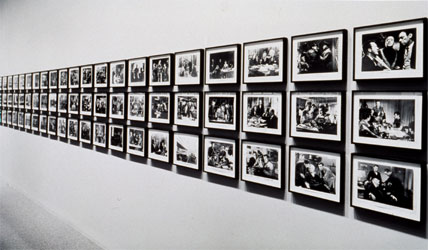
A shot of what we believe to be a detail of a previous installation of The Conversation Piece
“The Conversation Piece,” from 1993-95, occupies an entire long wall of the gallery and comprises hundreds of framed images, with one image per frame. It is striking how much more ambitious this piece is. And unlike the pieces from 2008, this particular configuration is essential to the identity of the work and there is a clear direction of flow, from left to right, beginning with images of only two people conversing or conferring, to three, and more and more, concluding with gatherings of masses of people. Yet there is an aleatory factor to my looking here as well. I look up and out and down and back at individual images. There is more inclination to get caught up in stories here precisely because each image occupies its own framed space, even though the overall arrangement is clearly artificial, based on how many people are conversing. This “conversation piece” contains a lot to talk about: it is visually entrancing while it also teases our minds.
—Susan L. Feagin is a philosopher and friend of artblog



